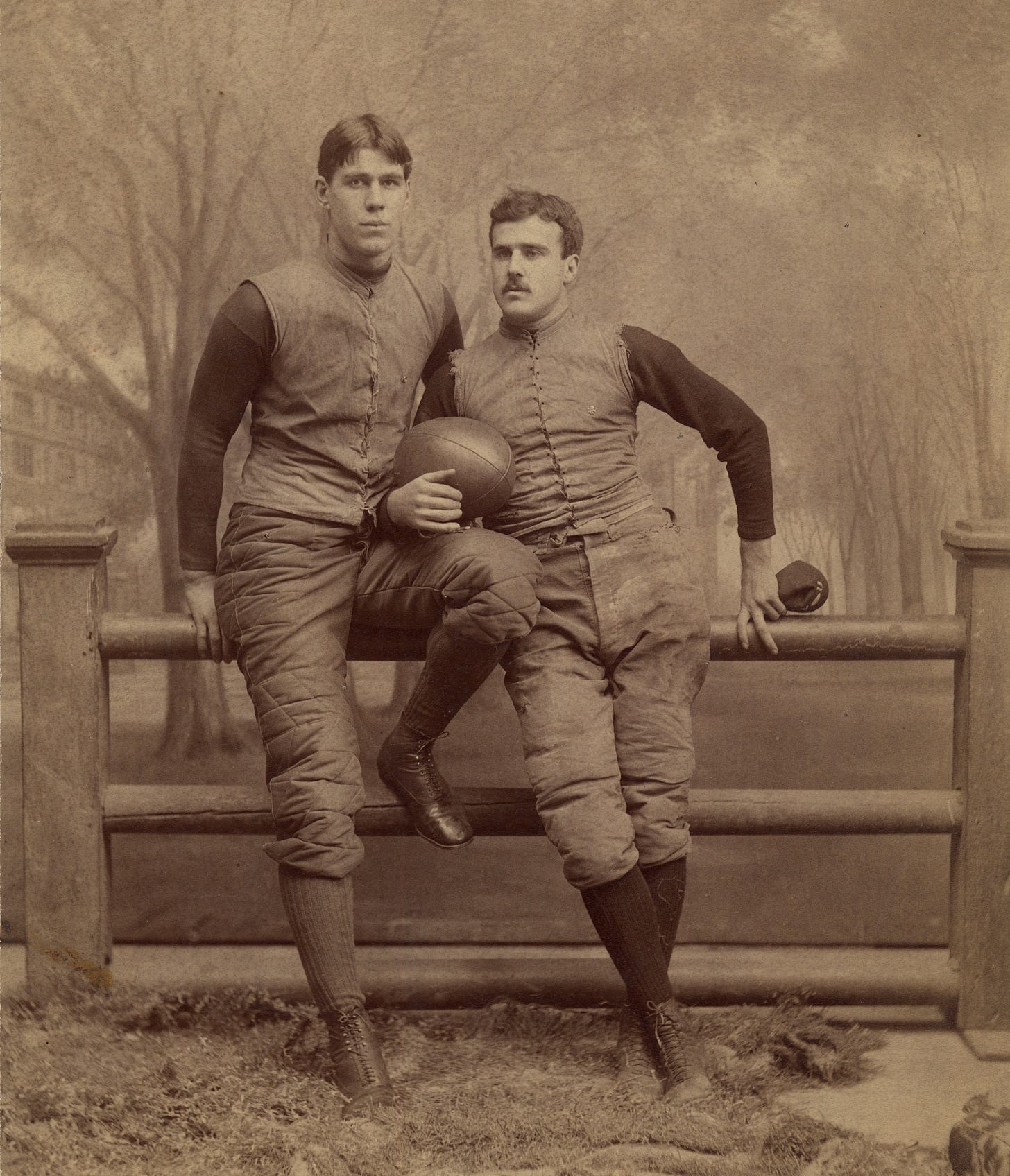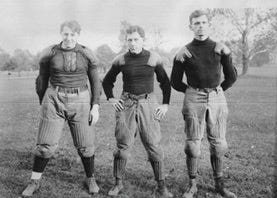Today's Tidbit... Football's Heaviest Player Pre-WWI
During the first eighty or ninety years of football, the linemen were often the same size as the backs, though there were occasional guards like Pudge Heffelfinger, who carried 210 pounds while playing at Yale from 1888 to 1891. Pudge's size was legendary, in part, due to pairing it with tremendous mobility.
Another sizable early player was Tiny Maxwell, whose 240 pounds moved the needle on the scale while donning the moleskins for Chicago in 1902 and 1903 and Swarthmore in 1904 and 1905.
Other sizable fellows of the pre-war era included:
Craig Redmon (Chicago, 1913) - 270 lbs.
Zeus Roberts (Harvard, 1900) - 274 lbs.
Holliday (Texas, 1913) - 275 lbs.
Alex Coxe (Yale, 1889) - 290 lbs.
Davidson (Kansas City Medical College, 1906) - 307 lbs.
However, the heaviest player on the gridiron before WWI was likely Robert W. Blanchard, who played for Hinsdale High School in New Hampshire. Blanchard stood 6 feet 2 inches, weighed 412 pounds, and was said to be surprisingly agile for his size. Unfortunately, he was so large that commercially-made football pants were unavailable, so he wore cyclist's pants, which came in exceedingly large sizes for some reason.

Blanchard was not a star based on his play, but his size often attracted larger-than-usual crowds to Hinsdale's games. Alas, Blanchard did not play in college, so his exploits were known only to the few who saw his games in person and those who read of them in local newspapers.
Football Archaeology is reader-supported. Click here to buy one of my books or otherwise support the site.



